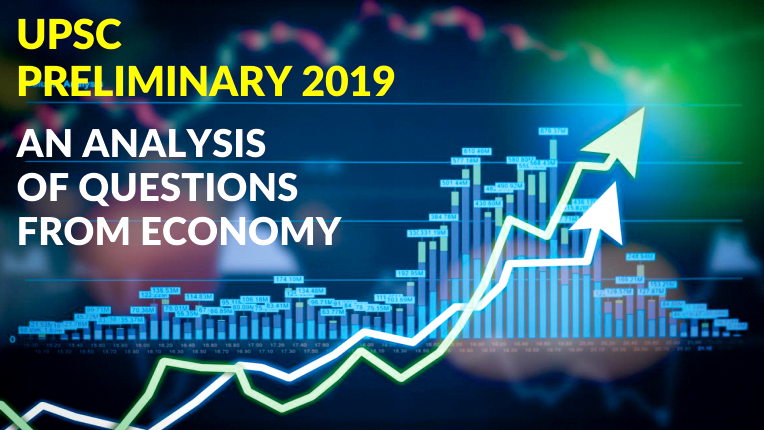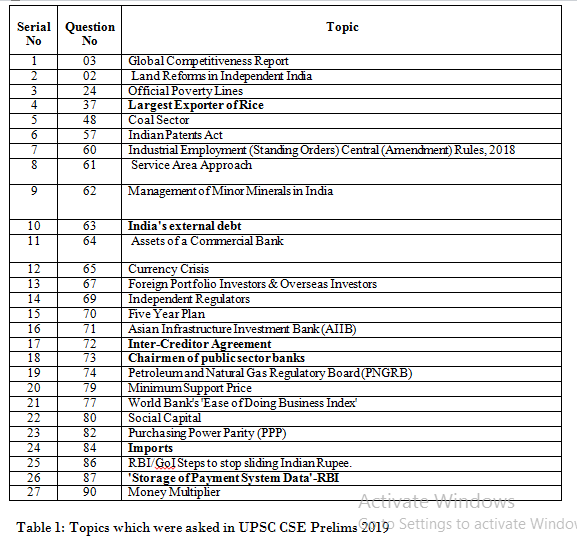




It is very important to analyze previous years’ question paper subject wise. It gives a 2-way benefit. On one hand, it gives you a very clear picture regarding the way UPSC thinks about the particular subject, while on the other hand, it makes you minutely strong on different subtopics on that subject. The rule is very simple, the more relevant and standard questions you face, the better your preparation will be.
Here, in this write up, I would like to go through the 2019 Preliminary (General Studies –I) question paper and analyze the ECONOMY Part.
(You may download the question paper from the following link: https://www.upsc.gov.in/sites/default/files/csp-p1.pdf
Also download the official answer keys from here: https://www.upsc.gov.in/sites/default/files/AnsKeyCSP-19-GS_I.pdf)
Any analysis requires 2 things:
Here I am talking Question Paper Booklet No: A with me. So serial numbers may vary with other series.

So from the above table, we can see that a total of 25+ questions were asked from the Economy, out of which 6 questions were exclusively from Current affairs.
If we break it up into several sub-topics then it will stand as following :
Banking/RBI: 07 Questions.
Regional Bodies/Reports: 03 Questions.
Conceptual: 07 Questions.
So, as many as 17 questions were asked from pure Economy/Banking topics.
So, last year ECONOMY was dominating the question paper along with Polity and Governance. It could have brought 40+ marks alone if prepared with a holistic approach.
The Cut-off marks in Preliminary Examination last year is also suggesting, the overall toughness of the Questions.
Hence, it may be easily concluded that those who had their grip over ECONOMY sailed through while the others couldn’t make it last year.
This year again, I am expecting a question paper full of Economic Issues. However, the pattern or the sub-topics may change keeping in mind the different scenarios this year. I am trying to come up with a write up keeping tabs with the burning issues month wise. Till then good luck with your preparation.
© 2025 iasgyan. All right reserved